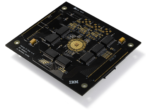Pratik Mahajan, Synopsys VC Formal R&D Group Director, kicked off an absorbing event featuring talks from multiple customers in Europe. He spent some time on formal signoff, an important topic that I’m still not sure is fully understood. Answering the questions “OK, we did a bunch of formal checking but how does that affect… Read More
Key Requirements for Effective SoC Verification Management
Effective and efficient functional verification is one of the biggest hurdles for today’s large and complex system-on-chip (SoC) designs. The goal is to verify as close as possible to 100% of the design’s specified functionality before committing to the long and expensive tape-out process for application-specific integrated… Read More
Techniques and Tools for Accelerating Low Power Design Simulations
I recently watched a webinar titled “How to accelerate power-aware simulation debug with Synopsys’ VC LP” that was presented by Ashwani Kumar Dwivedi senior applications engineer at Synopsys. Watching the webinar made me reminisce how design verification has evolved over the years. A long time ago, static verification started… Read More
A New ML Application, in Formal Regressions
Machine learning (ML) is a once-in-a-generation innovation that seems like it should be applicable almost everywhere. It’s certainly revolutionized automotive safety, radiology and many other domains. In our neck of the woods, SoC implementation is advancing through learning to reduce total negative slacks and better optimize… Read More
Change Management for Functional Safety
By now we’re pretty familiar with the requirements ISO 26262 places on development for automotive safety. The process, procedures and metrics you will apply to meet various automotive safety integrity levels (ASIL). You need to train organizations. In fact you should establish a safety culture across the whole company or line… Read More
What Might the “1nm Node” Look Like?
The device roadmap for the next few advanced process nodes seems relatively clear. The FinFET topology will subsequently be displaced by a “gate-all-around” device, typically using multiple stacked channels with a metal gate completely surrounding the “nanosheets”. Whereas the fin demonstrates improved gate-to-channel… Read More
EDA Tool Support for GAA Process Designs
With the announcement of early PDK availability for the 3nm GAA process node, designers are extremely interested in the characteristics of the new “gate-all-around” transistor structure and how it compares to the existing FinFET device. The GAA transistor has been denoted as a (horizontal) nanowire or nanosheet.
I will talk… Read More
Synopsys Enhances Chips and Systems with New Silicon Lifecycle Management Platform
SLM. It’s a TLA (three-letter acronym) that you’ll be hearing more about. It stands for silicon lifecycle management and it has the potential of re-defining the role of EDA in the entire electronics ecosystem. A working definition of SLM is “monitoring, analysis and optimization of semiconductor devices as they are designed,… Read More
Synopsys Teams with IBM to Increase AI Compute Performance 1,000X by 2029
Anyone who frequents SemiWiki will likely know Moore’s Law. The prediction made by Gordon Moore over 50 years ago regarding the relentless increase in transistor density and reduction in cost has tracked well for a very, very long time. In recent years, there has been spirited discussion about the end of Moore’s Law. This is a discussion… Read More
Digital Design Technology Symposium!
Synopsys virtual events are high on my list for three reasons:
- They are very well organized and professionally








